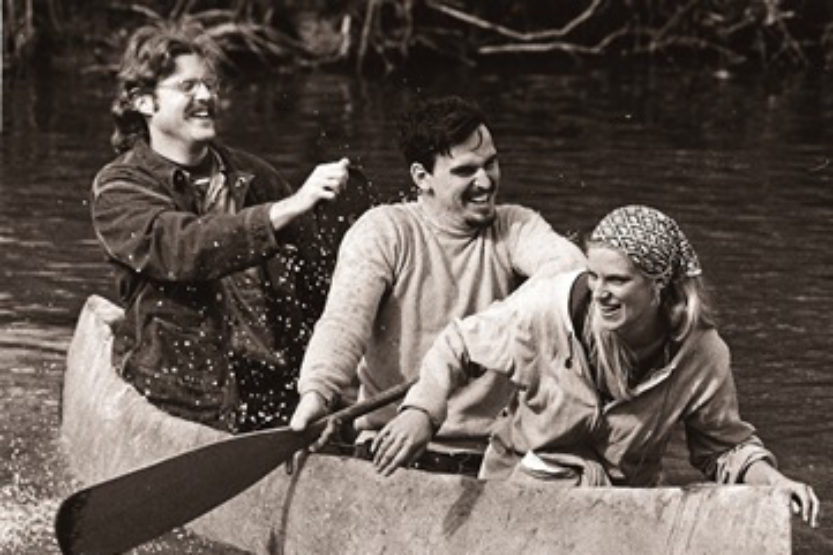Tip A Canoe and Concrete, Too
 A photo from the first concrete canoe competition between Illinois and Purdue.
Photo courtesy of Department of Civil and Environmental Engineering
A photo from the first concrete canoe competition between Illinois and Purdue.
Photo courtesy of Department of Civil and Environmental Engineering The genius emanating from the University of Illinois fills many pages in the book of all things remarkable: the invention of the LED; the discovery of archaea,
a third branch of life; the development of Netscape, the first personal Web browser; and many others.
What may not be quite as well-known is that Illinois also is the birthplace of the concrete canoe.
Stop chuckling – this stuff is as serious as being up the creek without a paddle.
The idea that a vessel as silent and graceful as a canoe, a vessel typically made of aluminum – or, even more poetically, birch bark – could be constructed of something as heavy and inelegant as concrete appears to be, well, like a fish out of water.
The sheer off-the-wallness of the concept may explain why something begun as a class project more than 40 years ago has evolved into an international obsession. That obsession started with the late Clyde Kesler ’43 ENG, MS ’46 ENG, a UI civil engineering professor and concrete expert who encouraged his students to think out-of-the-box.
Ergo, the concrete canoe.
When fellow Big Ten engineering students at Purdue learned of the Kesler caper, they challenged the Illini to a race. Facing off on May 16, 1971, at Kickapoo State Park’s Inland Sea, the teams were tied 2-2 going into the fifth and final race. Despite being prettier and lighter at 125 pounds, the Purdue boat capsized, giving the first championship to Illinois and its 360-pound creation, Mis-Led.
In just a few years, the craze had spread, with hundreds of teams competing across the nation. In the mid-1980s the American Society of Civil Engineers became interested and more formally organized the races. Today, concrete canoe competitions take place not just in the U.S. but in Israel, China, Japan, Germany, Australia, Oman, Turkey, South Africa and elsewhere.
Students spend thousands of hours on the project and earn no credit, but their enthusiasm is as boundless as their nights are sleepless. These students “learn lots of unteachable skills,” says Armen Amirkhanian, MS ’12 ENG, a UI graduate student and an adviser to the Illinois team. Plus, the whole idea is just plain wacky, and isn’t wackiness what makes college so memorable?
The competition’s required ingredients are Portland cement, water and aggregate. Teams experiment with substances, including microscopic glass bubbles (for lightness) and latex (for flexibility), and try to balance stability against speed (no one wants a tippy canoe). Sometimes these new ideas fail spectacularly, as in the case of the Illinois canoe that dissolved during the 2009 paddling competition.
Thanks to Amirkhanian’s efforts, the U of I is hosting the nationals (June 20-22) for the first time in 40 years.
Amirkhanian hopes Illinois can paddle to victory again. Either way, the Boneyard Yacht Club will have helped keep one of Illinois’ great – if unsung – traditions afloat.
Aronson is a freelance writer living in Urbana.

